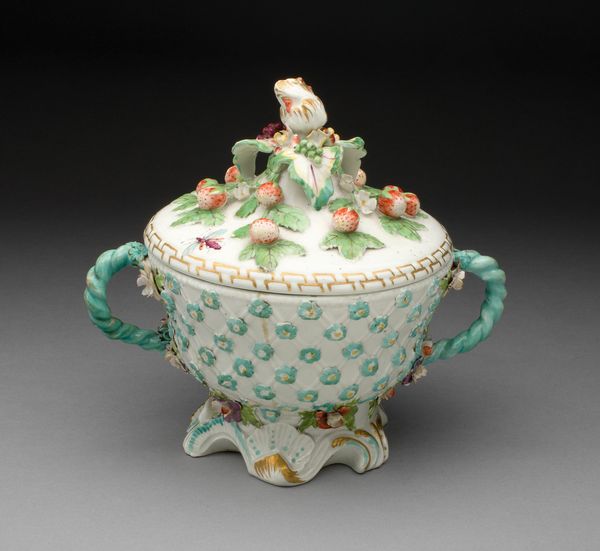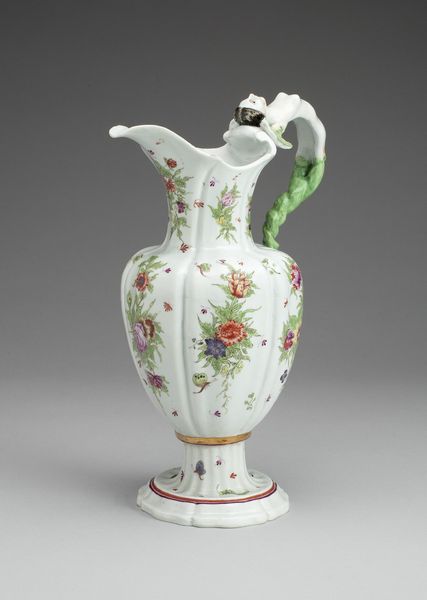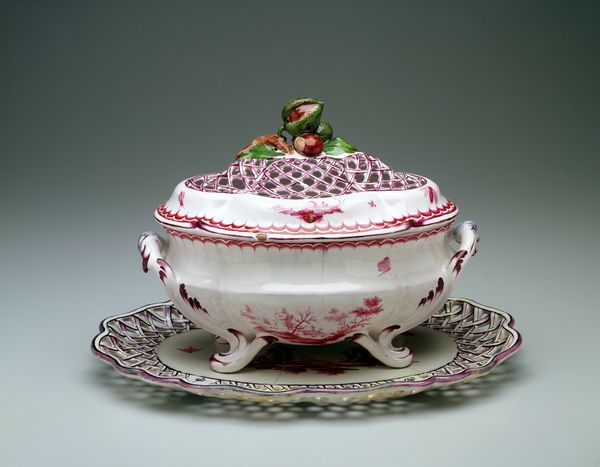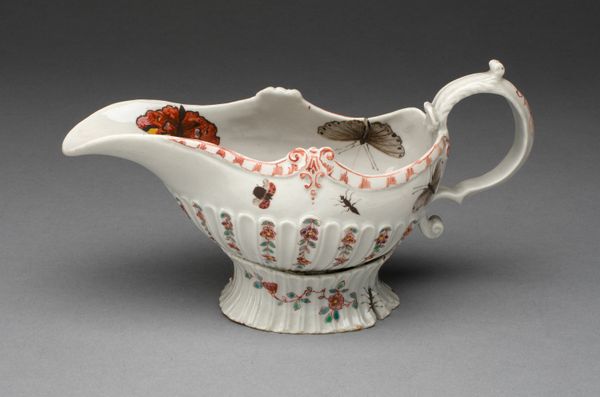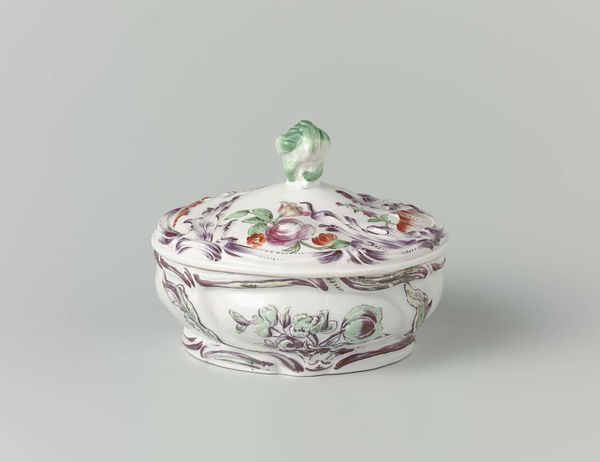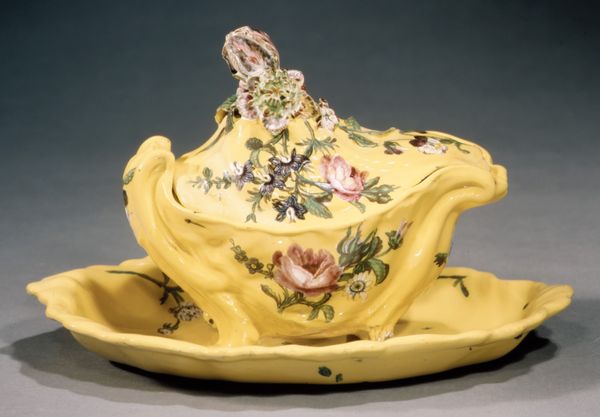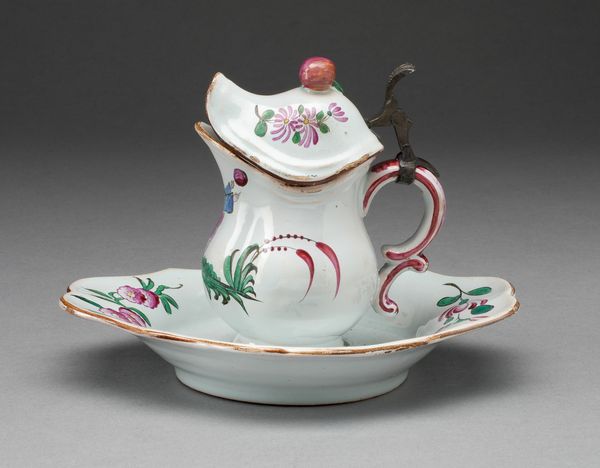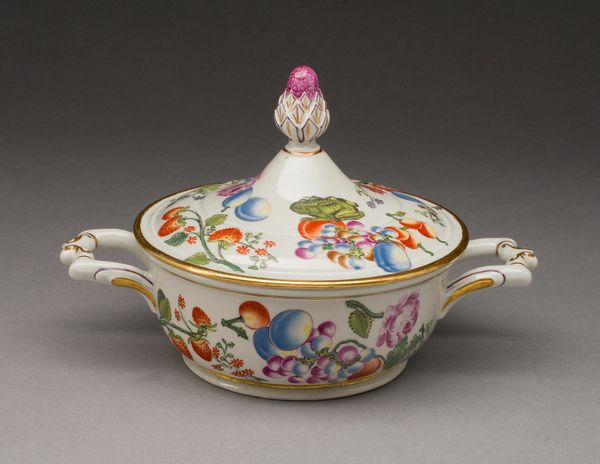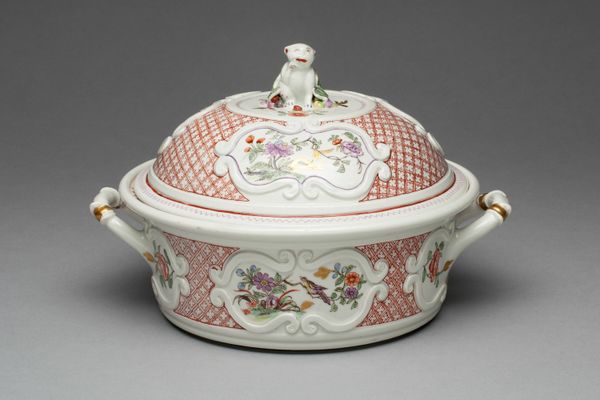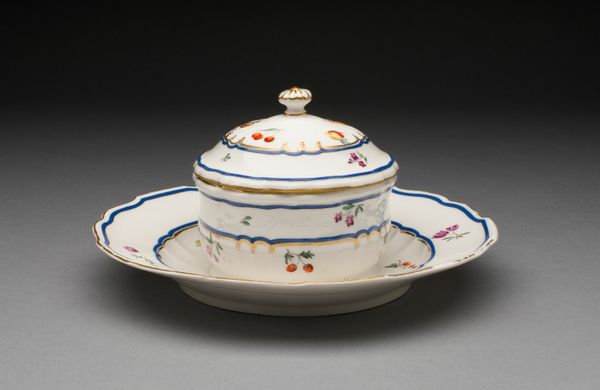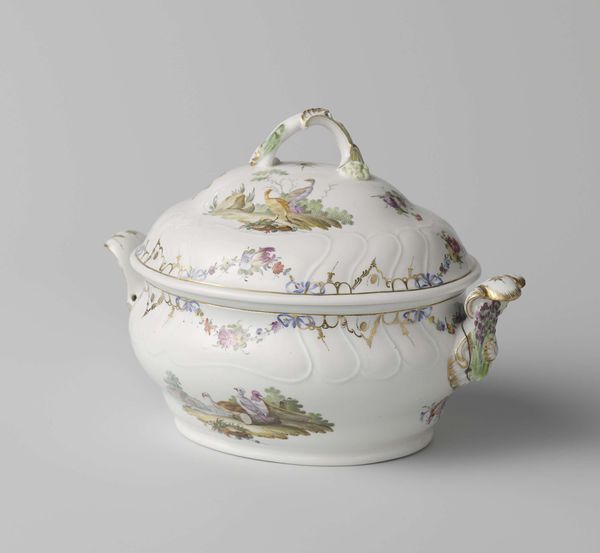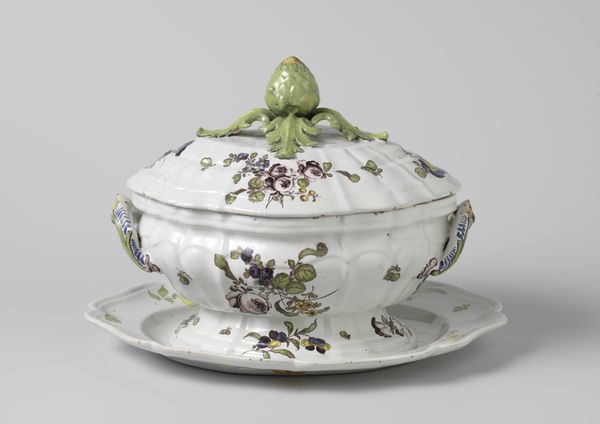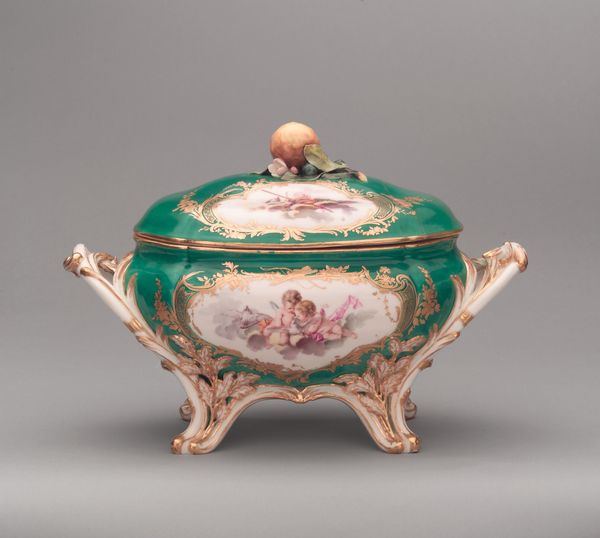
ceramic, sculpture
#
ceramic
#
figuration
#
sculpture
#
ceramic
#
decorative-art
#
rococo
Dimensions: Overall: 9 3/4 × 14 1/2 × 9 3/4 in. (24.8 × 36.8 × 24.8 cm)
Copyright: Public Domain
Editor: Here we have the “Tureen with cover,” crafted between 1755 and 1765 by the Veuve Perrin Factory. It’s ceramic and incredibly ornate, bordering on whimsical. The sculptural cherub seems a bit mischievous, lazing about atop a landscape! What strikes you most about this piece? Curator: I see echoes of transformation. The cherub, a symbol of innocence and potential, reclines amidst pastoral scenes. It suggests a bridging of earthly pursuits and spiritual aspirations. How does the cherub's pose – so languid, almost nonchalant – resonate with you? Editor: It feels deliberately carefree. Like a rejection of serious formality. Curator: Precisely. Consider the rococo style— known for its embrace of lightness, playfulness, and ornamental excess. This tureen, meant for serving food, is elevated to the realm of decorative art, almost a conversation piece. How might this merging of the functional and the fantastical reflect the values of the time? Editor: It suggests a society that prized beauty and leisure, willing to elevate even everyday objects into art forms. The landscapes depicted on the sides... what do they signify? Curator: Ah, that's where cultural memory comes into play. Pastoral scenes often evoke a romanticized view of nature, a longing for simpler times. This connects to the Arcadian ideal, a recurring theme in Western art representing harmony and escape. This tureen serves more than soup; it serves as a reminder, a connection to a collective yearning for beauty. It's fascinating how visual symbols transport emotions. Editor: I hadn't considered how a serving dish could be such a potent vessel of cultural memory! I'll definitely look at decorative arts differently from now on. Curator: Indeed. Every detail speaks volumes if we learn how to listen.
Comments
No comments
Be the first to comment and join the conversation on the ultimate creative platform.
